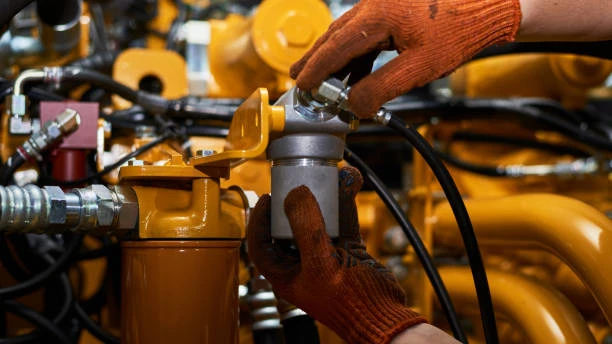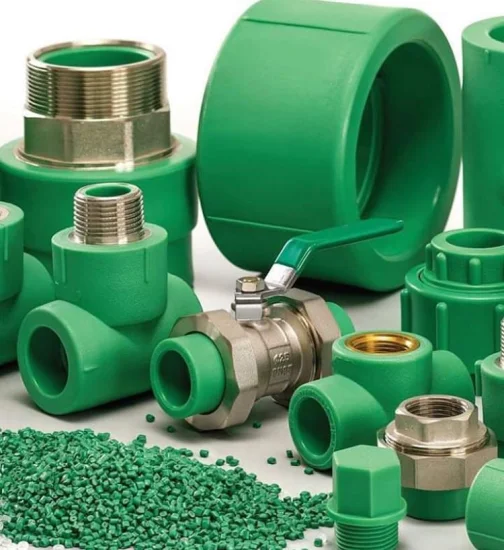In a significant move to enhance production capabilities, Domin, a leading manufacturer in the hydraulic valve sector, has acquired a second Renishaw metal additive manufacturing (AM) machine. This strategic investment aims to boost production efficiency and quality in hydraulic valve manufacturing, reflecting the growing trend toward advanced manufacturing technologies in the industry. In this article, we will explore the implications of this investment, the role of hydraulic valves, and the advantages of additive manufacturing.
Understanding Hydraulic Valves
Hydraulic valves are critical components in fluid power systems, controlling the flow and pressure of hydraulic fluids. They play a vital role in various applications, from industrial machinery to aerospace systems. By regulating the movement of fluids, hydraulic valves enable precise control of machinery and equipment, enhancing performance and safety.
Types of Hydraulic Valves
- Directional Control Valves: These valves direct the flow of hydraulic fluid to different parts of a system.
- Pressure Control Valves: These regulate the pressure within the hydraulic system, ensuring safe operation.
- Flow Control Valves: These control the speed of hydraulic actuators by regulating the flow rate of the fluid.
The Importance of Additive Manufacturing
Additive manufacturing, often referred to as 3D printing, is revolutionizing the production landscape. This technology builds components layer by layer, allowing for complex geometries that traditional manufacturing methods struggle to achieve. The use of additive manufacturing in hydraulic valve production offers several advantages:
1. Design Flexibility
Additive manufacturing allows for the creation of intricate designs that optimize performance and reduce weight. This flexibility is particularly beneficial for hydraulic valves, where design intricacies can significantly impact functionality.
2. Reduced Material Waste
Traditional machining processes often result in substantial material waste. In contrast, additive manufacturing utilizes only the necessary amount of material, leading to more sustainable production practices.
3. Faster Prototyping
The speed at which components can be designed and produced is greatly enhanced with additive manufacturing. This allows for quicker iterations and refinements of hydraulic valve designs, accelerating the development process.
4. Cost Efficiency
While the initial investment in additive manufacturing equipment can be high, the long-term cost savings through reduced material waste, faster production times, and decreased labor costs can be significant.

Domin’s Strategic Investment in Additive Manufacturing
Overview of the Acquisition
Domin’s decision to acquire a second Renishaw metal additive manufacturing machine underscores its commitment to innovation and quality in hydraulic valve production. This addition enables the company to scale up production, meet increasing demand, and enhance the capabilities of its manufacturing processes.
Enhancing Production Capacity
With the new machine, Domin can significantly increase its output of hydraulic valves. This is crucial in a market where demand for efficient and reliable hydraulic solutions is on the rise. The ability to produce more valves while maintaining quality standards is a competitive advantage.
Improving Quality and Performance
Renishaw’s metal additive manufacturing technology allows for tighter tolerances and improved surface finishes in the production of hydraulic valves. This ensures that the final products meet stringent industry standards and customer requirements.
The Future of Hydraulic Valve Manufacturing
Industry Trends
The hydraulic valve manufacturing industry is witnessing several trends that shape its future:
- Increased Automation: As manufacturing processes become more automated, the integration of additive manufacturing will play a key role in streamlining operations.
- Sustainability Focus: Companies are increasingly prioritizing sustainable practices, making additive manufacturing an attractive option due to its reduced waste and energy consumption.
- Customization Demand: As industries seek more tailored solutions, the flexibility of additive manufacturing allows for the production of custom hydraulic valves to meet specific application needs.
Challenges to Consider
Despite the advantages, there are challenges associated with integrating additive manufacturing into hydraulic valve production:
- Material Limitations: Not all materials suitable for traditional manufacturing are compatible with additive manufacturing.
- Regulatory Compliance: Ensuring that additive manufacturing processes comply with industry regulations can be complex.
- Skill Development: Employees must be trained to operate and maintain new additive manufacturing equipment effectively.
Conclusion
Domin’s investment in a second Renishaw metal additive manufacturing machine marks a significant advancement in hydraulic valve production. By leveraging the benefits of additive manufacturing, Domin can enhance its production capacity, improve product quality, and meet the growing demand for innovative hydraulic solutions. As the industry continues to evolve, the integration of advanced manufacturing technologies will play a pivotal role in shaping the future of hydraulic valve manufacturing.
FAQs
- What are hydraulic valves used for?
- Hydraulic valves control the flow and pressure of hydraulic fluids in various applications, ensuring precise control of machinery and equipment.
- What advantages does additive manufacturing offer for hydraulic valve production?
- Additive manufacturing provides design flexibility, reduced material waste, faster prototyping, and potential cost savings.
- Why did Domin acquire a second Renishaw machine?
- The acquisition aims to boost production capacity, improve quality, and meet increasing demand for hydraulic valves.
- What types of hydraulic valves are commonly used?
- Common types include directional control valves, pressure control valves, and flow control valves.
- What challenges are associated with additive manufacturing in this sector?
- Challenges include material limitations, regulatory compliance, and the need for skill development among employees.


















